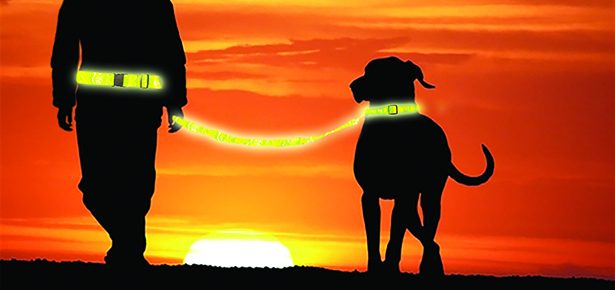

Emotional Support Animals vs. Service Dogs:
Cue the Controversy
The debate is heated. The rise in Emotional Support Animals—also known as ESAs—has coincided with them making headlines, and not for entirely positive reasons. You’ve probably heard about the peacock on the plane, along with gliding possums, snakes, spiders and more—oh my! Ivana Trump let her miniature Yorkie romp at a posh restaurant, claiming the pup was an ESA. As a dog lover, you may be tempted to think, what’s the big deal? But people with legitimate service dogs and ESAs say untrained dogs with fake certifications are ruining it for everyone. Reported instances of ESAs endangering service dogs and the people they’re helping are perhaps the worst of it. Stories abound.
“Untrained dogs have regularly been an issue for my Service Dog and I while flying, working, etcetera,” says Chelsea Hudlow.
“People with fake service animals caused so much trouble for my late husband and his seizure dog,” recollects Jeannie Evans Case. “People ‘registering’ online so they can take their dog anywhere forced him to start leaving Tigger at home. It’s gotten out of control.”
Annie Colson, who has an Emotional Support Dog, points out “ESAs have no public access rights except in places that are already dog friendly. People with legitimate service dogs are sick to death of yappy little ESAs resource guarding the carts they’re sitting in and causing distractions for the service dog that could be deadly to the handler. I have an ESA and know how useful they can be, but they do not have the same rights as a Service Dog!”
And Brynn Lauren, who has a service animal, says, “I cannot tell you how many times people have just put a vest on their dog and bring them into a store with no training. They act like normal dogs and start growling and barking at my service dog, which distracts from his job! I am supportive of course of people who truly need these dogs but just putting a vest on your dog so they can go with you everywhere needs to be illegal.”

Jessica Brandvold shares,“I did this with my dog [had her registered as an ESA], however it was only after the recommendation of my therapist that I get a dog. Ideally, I wanted a service dog, but I couldn’t wait the five to ten years for a service dog for PTSD. So I started to look at dogs that might work. This was in January. I finally found a dog that met all my criteria in May. First thing I did was see where her training was, and she was pretty well trained, so I enrolled her in a CGC [Canine Good Citizen] class and she passed the test. I purchased the vest and a few other things to make sure she would be allowed on the plane to go visit family in L.A. I was so impressed with how well she handled everything, including bringing me out of and preventing panic attacks, that she has since graduated to Service Dog In Training.”
Melissa Ratner also has Emotional Support Animals and feels strongly about the subject: “One of mine (which passed away a few years back) was actually featured in your magazine,” she says. “This particular pup helped me accept having a chronic disease and learn how to still have a good quality of life. Another of my pups wakes me up when my blood glucose level drops too low (an action that would be performed by a service animal but he is not trained or registered as such). I don’t know how he knows to do this. But none of my pups are registered service animals and so I do not take advantage of a loose system to take them anywhere and everywhere. They don’t need to go everywhere with me. Sometimes I’m going somewhere that would cause stress for them or just be more difficult for me to get done what I need and control them at the same time. Sometimes the best and safest place for them is at home.”
Unfortunately, not everyone realizes that having their untrained dog pose as ESA creates issues for others.
Service Dogs v. Emotional Support Animals
Of course there are people whose dogs legitimately come to their emotional rescue. Canines have long been flying coach as service dogs who are trained to perform certain tasks, such as guide dogs for the blind and dogs that respond to their owners’ seizures or more recently, PTSD.
The Americans With Disabilities Act defines service animals only as trained dogs or miniature horses but airlines are regulated by the more lenient Air Carrier Access Act of 1986. This federal law allows free travel for “any animal” trained to assist a person with a disability or that provides emotional support. There are no guidelines to determine whether an animal can actually provide emotional support.
The result has turned some flights into modern day Noah’s Arks with dogs blocking food carts, cats peeing on seats, and ducks waddling the aisles. But the animals haven’t run amok; it’s their owners…
Unfortunately with so much widespread abuse many passengers view all animals onboard as fake, which is unfair treatment of those with legitimate need of service and support animals. Although airlines can require passengers to produce a letter from a physician or mental health professional, these letters are easily forged or purchased from nefarious websites.
ESA Certification—Real or Scam?
Psychologist Dr. Christine Catrell has written letters certifying patients with ESAs so that they can live and travel together. “One patient’s anxiety disorder became difficult when she moved into a dorm,” says Dr. Catrell. “She wanted to bring her pet rat, but pets aren’t allowed so I wrote a letter to her college and they both lived happily together until Picasso (a rat) passed away.”
Dr Catrell recently got a call from a former patient whose dog was her ESA. “I had written her a letter but it expired [airlines stipulate that letters from mental health professionals are only good for a year] and she asked for another,” Dr. Catrell says. “I turned her down as she was no longer in treatment with me and I could lose my license to practice.”
Interestingly, you can get an ESA “evaluation” or “travel” letter written by a mental health professional online. If an airline or landlord requires a “reasonable accommodation” form, you can get that too by their “therapist” for a $75 fee.
One online site even says that, “ESA has joined forces with a team of mental health professionals … to provide you with your evaluation letter which is required by law to travel with your animal.” The site looks official—no wonder people are being duped by these scams. And wait, there’s more: “The evaluation fee does not guarantee outcome of appointment and is non-refundable.” (I tried to contact this site and similar sites – no reply.)
While Dr Catrell and Dr Fine are pro-animal, they believe that people are getting fooled by these sites and being taken advantage of. “Some people don’t care if they are getting scammed as long as they get that letter,” says Dr. Catrell. “I highly doubt these sites have legitimate therapists, who would be subject to criminal charges.” For instance, Dr. Catrell is only allowed to practice in Michigan. Online therapists don’t care where you live.
Flying the Furry Skies
A 70-pound Pit Bull bit a passenger on one flight and on another a flight attendant paged a vet because a passenger said her dog was having a breathing problem. A nurse onboard came to the rescue and advised the owner to hold tightly and talk to their “emotional support animal” because it was having an anxiety attack.
Citing a survey of about 5000 flight attendants across 30 airlines, the Association of Flight Attendants (AFA) reported that:
- 61 percent worked a flight where an emotional support animal caused a disturbance of some kind in the cabin.
- 26 percent of the disruptions included emotional support animals defecating or urinating in the cabin
- 13 percent reported passenger-on-passenger conflicts triggered by an ESA.
- 20 percent of responding flight attendants had seen discrimination and/or bias against passengers traveling with service animals.
- 64 percent did not believe that individual airline ESA policies and procedures are effective in supporting a safe and equitable policy for all passengers in the cabin.
To protect the rights of passengers with disabilities and limit abuse, the AFA asked the Department of Transportation (DOT) to take action. Delta Airlines was amongst the first to impose tighter restrictions on service animals.
Delta’s new requirements—to certify the owner’s need and the animal’s training—took effect in March 2018. Passengers with ESAs need to submit a veterinary health form at least 48 hours before travel; an Emotional Support/Psychiatric Service Animal Request form that requires a letter prepared and signed by a doctor or licensed mental health professional; and a signed Confirmation of Animal Training form. “The rise in serious incidents involving animals in flight leads us to believe that the lack of regulation in both health and training screening for these animals is creating unsafe conditions across U.S. air travel,” said John Laughter, with Delta’s Corporate Safety, Security, and Compliance.
“People with legitimate service dogs are sick to death of yappy little ESAs resource guarding the carts they’re sitting in and causing distractions for the service dog that could be deadly to the handler.”
The DOT says there were more than 2000 complaints related to animals accompanying people with unspecified disabilities in 2016. But Sue in Vancouver (not her real name) has been a flight attendant with Air Canada for over 35 years and never had an incident.
“I love that Air Canada takes mental illness seriously and allows ESAs onboard,” she says. “On one flight a large dog had a window seat and passengers came by to pet him.” (I’d like to sit next to a dog on a flight, but not a peacock…)
Sue doesn’t want airlines to require vet certificates because it’s an extra charge that some people can’t afford. As well, “Sometimes you have to wait months to see a medical health therapist. And there have been negative incidents with animals in the hold. I think some people have avoided flying for these reasons alone,” she says.
Psychologist Aubrey Fine argues that the DOT needs to take into consideration animal welfare. He says that to be a designated ESA, ask whether the animal is healthy enough; test for temperament and behaviour reliability and consistency. “An animal can be aggressive and we have unleashed a challenge that could have been prevented early on with safeguards and clear guidelines,” says Dr. Fine. “However, some ESA standards work, and they have led to ESAs successfully living in dorms and flying in planes.”
Doggy Diners
ESAs also accompany their owners to restaurants. In an email, Tammy Treed says she is glad there is a crackdown on “dogs with little vests” represented as ESAs. She was recently in a restaurant where a nearby table had “One lady with a mini Chihuahua sitting in her lap at the table while food was being served,” says Tammy. “The poor dog was shaking and seemed scared. I’m not sure if he was a support dog for her or she was supporting him but he was wearing an emotional support vest…we have not been back to that restaurant.”
Tammy also knows people with multiple dogs who have gone online to get them certified as emotional support dogs “just to get them in apartments or homes that do not normally allow pets. They have zero training. I let them know that fake service dogs take away from people like our veterans and disabled people who really do need a service dog. I’m looking forward to tougher laws and consequences for people who do this.”
Legal Beagles – Ramifications
Nineteen states have passed laws that criminalize passing off pets as service animals. And a Senate Bill was passed last February to reduce ESA fraud by making it a criminal act to falsely claim having a disability in order to have an animal in their apartment or dorm.
All the controversy is unfortunate as ESAs truly make a world of difference for those who need them. Though it’s tempting to certify a pet in order to gain access to places that would not normally welcome them, there are unintended consequences that affect others.
Join the newsletter and never miss out on dog content again!
"*" indicates required fields
By clicking the arrow, you agree to our web Terms of Use and Privacy & Cookie Policy. Easy unsubscribe links are provided in every email.





